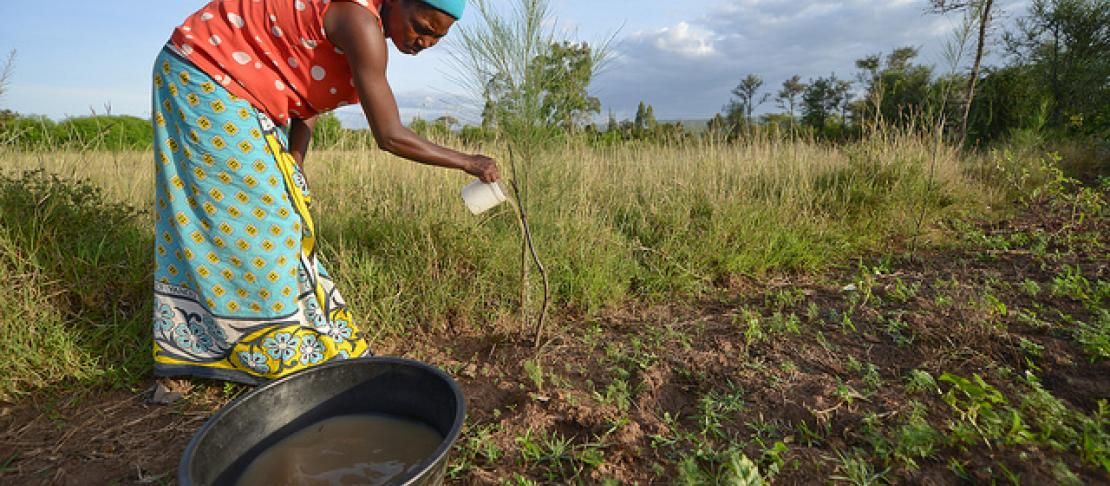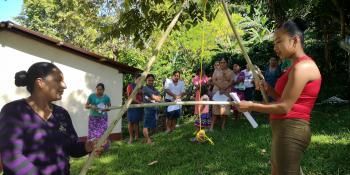Climate models: more questions than answers

Cliquez pour la version française
By Sonja Vermeulen
Any farmer or policy-maker concerned about climate change would like to know how much crop yields will go up or down in the coming decades. But don’t hold your breath: even our newest general circulation models are not yet up to the task of making climate projections reliable enough for us to estimate agricultural yields under climate change. So says the paper Implications of regional improvement in global climate models for agricultural impact research by Julian Ramirez-Villegas, Andy Challinor, Philip Thornton and Andy Jarvis.
The authors analyse the performance at regional level of 26 simulations in CMIP5, which is the ensemble of general circulation models that will form the basis of the 2014 report of the IPCC (Intergovernmental Panel on Climate Change). Testing the simulations against real weather data from five tropical regions, they find typical errors of more than 2°C for temperature and 20% for precipitation over the growing season. This level of precision is simply not good enough: staple crops such as maize and rice are highly sensitive to 2°C rise in temperature or 20% less rainfall, with yield changes of 10-20%.
As well as affecting trends in average conditions, climate change means more variable rainfall and temperature, both within and between growing seasons. But models are poor at representing inter-annual variability. Also, they perform much better for some regions and some crops than for others. The authors note for northern India that wheat, sown in winter under irrigation, is much easier to simulate than summer-sown rice, owing to the large GCM biases in monsoon rainfall. Hence we can all too easily make mistakes in major adaptation decisions like which crop to promote as a future “best bet” under climate change.
More encouraging news is that models’ ability to represent climate is improving, by up to 15% compared to CMIP3. However, if models are to advance sufficiently to permit assessments of future crop yields before today’s young scientists have retired, we need major breakthroughs in modeling approaches, not just linear improvements. For policy-makers, increasing ability to make decisions despite uncertainty may actually be more important than improving models.
Are climate models useless then? On the contrary: perhaps we should be using them more, but for different purposes. First comes the basic physics. Models provide unique insights into climatic processes, and it may be preferable to enhance their ability to mimic critical mechanisms such as cloud formation, even if that functionality comes at the expense of certainty in forecasts.
Second, when using models to assess adaptation options in agriculture, rather than generating a single “most likely scenario” (such as an expected percentage change in crop yield) it may be better to use models to elicit a range of scenarios. Policy-makers can thus test whether promising adaptation options may indeed be feasible over multiple possible futures. Or they can explore completely novel ideas and pathways. Perhaps the very best use of models is to improve our questions, not our answers.
Links
- Ramirez-Villegas J, Challinor AJ, Thornton PK and Jarvis A. 2013. Implications of regional improvement in global climate models for agricultural impact research. Environmental Research Letters 8(2) 024018 doi:10.1088/1748-9326/8/2/024018
- Ramirez-Villegas J, and Jarvis A. 2013. Young scientists may retire before global climate change models improve.
- Maslin M and Austin P. 2012. Uncertainty: climate models at their limit? Nature 486: 183–184 doi:10.1038/486183a
- Weaver CP, Lempert RJ, Brown C, Hall JA, Revell D and Sarewitz D. 2013. Improving the contribution of climate model information to decision making: the value and demands of robust decision frameworks. WIREs Climate Change 4: 39-60. doi: 10.1002/wcc.202
This is the July 2013 edition of AgClim Letters, a regular e-bulletin on science and policy written by Sonja Vermeulen, Head of Research for CCAFS. Sign up to receive AgClim Letters bulletin and read past bulletins. Your comments are welcome below.


